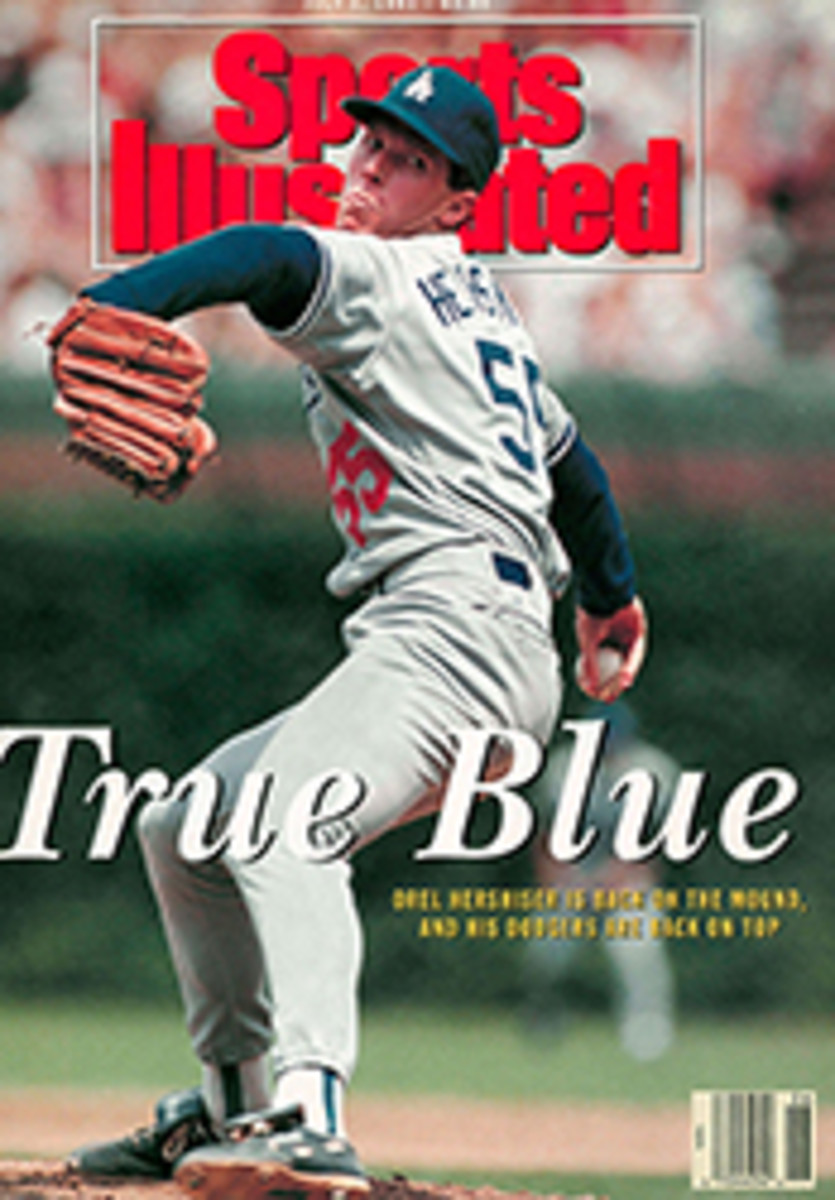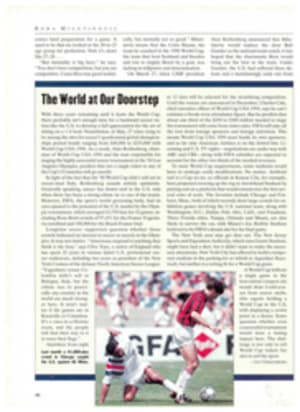
The World at Our Doorstep
With three years remaining until it hosts the World Cup, there probably isn't enough time for a backward soccer nation like the U.S. to develop a full appreciation for the art of sitting on a 1-0 lead. Nonetheless, in May, 27 cities vying to be among the sites for soccer's quadrennial global championships posted bonds ranging from $40,000 to $255,000 with World Cup USA 1994. As a result, Alan Rothenberg, chairman of World Cup USA 1994 and the man responsible for staging the highly successful soccer tournament at the '84 Los Angeles Olympics, predicts that not a single ticket to any of the Cup's 52 matches will go unsold.
In light of the fact that the '90 World Cup didn't sell out in soccer-mad Italy, Rothenberg sounds awfully optimistic. Generally speaking, soccer has drawn well in the U.S. only when there has been a strong ethnic tie to one of the teams. However, FIFA, the sport's world governing body, had its eyes opened to the potential of the U.S. market by the Olympic tournament, which averaged 43,750 fans for 32 games, including Rose Bowl crowds of 97,451 for the France-Yugoslavia semifinal and 108,800 for the Brazil-France final.
Longtime soccer supporters question whether those crowds indicated an interest in soccer or merely in the Olympics. It may not matter. "Americans respond to anything they think is the best," says Clive Toye, a native of England who has spent 25 years in various failed U.S. professional soccer endeavors, including two years as president of the New York Cosmos of the defunct North American Soccer League. "Yugoslavia versus Colombia didn't sell in Bologna, Italy, but the ethnic ties to practically any country in the world are much stronger here. It won't matter if the games are in Knoxville or Columbus. It's a once-in-a-lifetime event, and the people will find their way to it to wave their flags."
Anywhere from eight to 12 sites will be selected for the monthlong competition. Until the venues are announced in December, Charles Cale, chief executive officer of World Cup USA 1994, says he can't estimate a break-even attendance figure. But he predicts that about one third of the $250 to $300 million needed to stage the tournament will come from ticket sales. FIFA will take all the loot from foreign sponsors and foreign television. This means World Cup USA 1994 must hustle its own sponsors, and so far only American Airlines is on the dotted line. Licensing and U.S. TV rights—negotiations are under way with ABC and CBS—along with FIFA subsidies are expected to account for the other two thirds of the needed revenues.
To meet World Cup requirements, some stadiums would have to undergo costly modifications. No matter. Artificial turf is a Cup no-no, so officials in Kansas City, for example, have proposed covering up the rug at Arrowhead Stadium by putting sod on a platform that would extend over the first several rows of seats. The favorites include Chicago and Foxboro, Mass., both of which recently drew large crowds for exhibition games involving the U.S. national team, along with Washington, D.C.; Dallas; Palo Alto, Calif.; and Pasadena. Three Florida cities, Tampa, Orlando and Miami, are also likely to survive the cut, with Miami's Joe Robbie Stadium believed to be FIFA's dream site for the final game.
The New York area may get shut out. The New Jersey Sports and Exposition Authority, which runs Giants Stadium, might have had a shot, but it didn't want to make the necessary alterations. New York City has offered to build a temporary stadium in the parking lot or infield at Aqueduct Racetrack, but neither is a setting fit for a World Cup game.
A World Cup without a single game in the host nation's largest city would draw I-told-you-sos from soccer snobs, who equate holding a World Cup in the U.S. with displaying a crown jewel in a desert. Some question whether even a successful tournament would have a lasting impact here. The challenge is not only to sell World Cup tickets but also to sell the sport.
PHOTO
BILL SMITH
Last month a 41,000-plus crowd in Chicago caught the U.S. against AC Milan.

